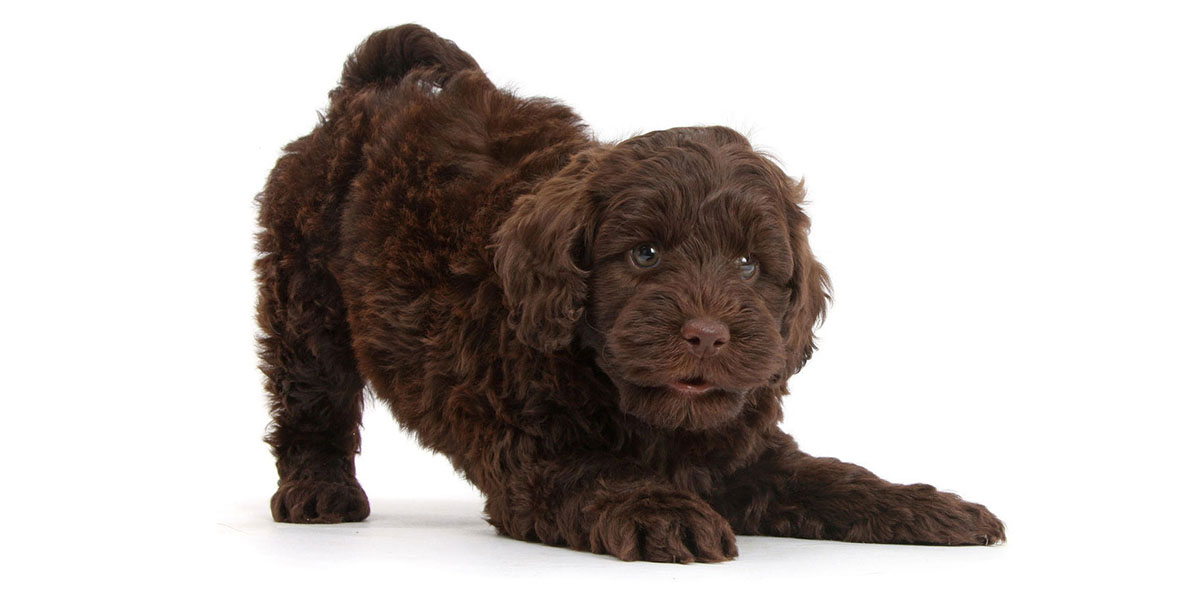Taking too long? Close loading screen.

May 1st
The Labradoodle is a popular breed known for its friendly temperament, intelligence, and low-shedding coat. As a cross between a Labrador Retriever and a Poodle, this breed comes in various sizes and weights. In this article, we’ll explore how much a Labradoodle should weigh, from puppy to adult, and how to maintain a healthy weight for your furry friend. Understanding your Labradoodle’s weight is essential for their health and well-being.
A mini Labradoodle typically stands between 14 to 16 inches tall and weighs between 15 to 25 pounds when fully grown. This size is achieved by breeding a Labrador Retriever with a Miniature Poodle, resulting in a smaller, more compact dog.
The medium-sized Labradoodle stands between 18 to 20 inches tall and weighs around 30 to 45 pounds. This size is often the result of breeding a Labrador Retriever with a Moyen or Small Standard Poodle.
A standard Labradoodle is the largest of the three size variations, standing between 21 to 24 inches tall and weighing anywhere from 50 to 65 pounds. This size is achieved by breeding a Labrador Retriever with a Standard Poodle.
Labradoodle puppies are born weighing only a few ounces. Their weight will quickly increase during their first few weeks of life as they grow and develop.
As a Labradoodle grows into adulthood, their weight will stabilize within a specific range based on their size variation.
The ideal weight for a male Labradoodle will depend on the size variation of the dog. For a mini Labradoodle, the ideal weight range is between 15 to 25 pounds. For a medium Labradoodle, the ideal weight range is 30 to 45 pounds. Finally, for a standard Labradoodle, the ideal weight range is 50 to 65 pounds or more, depending on the individual dog’s size and structure.
Female Labradoodles typically weigh slightly less than their male counterparts. For a mini Labradoodle, the ideal weight range is between 15 to 20 pounds. For a medium Labradoodle, the ideal weight range is 25 to 40 pounds. For a standard Labradoodle, the ideal weight range is 45 to 60 pounds.
Genetics play a significant role in determining a Labradoodle’s size and weight. The size of the dog’s Labrador Retriever and Poodle parents will influence the offspring’s final size and weight.
A well-balanced diet is essential for maintaining a healthy weight for your Labradoodle. Overfeeding or underfeeding your dog can lead to weight problems. Make sure to follow the feeding guidelines provided by your dog’s food manufacturer or consult your veterinarian for personalized recommendations.
Labradoodles are energetic dogs that require regular exercise to maintain a healthy weight. A lack of exercise can lead to weight gain and obesity, while too much exercise can cause a dog to lose weight. Make sure your Labradoodle gets an appropriate amount of exercise based on their age, size, and energy level.
A Labradoodle’s overall health can impact its weight. Health issues like thyroid problems or food sensitivities can cause weight fluctuations. Consult your veterinarian if you notice significant changes in your Labradoodle’s weight to rule out any underlying health issues. For specific concerns like “how to help your mini Labradoodle live a fulfilling life with food sensitivities,” consult with a veterinarian who can guide you through appropriate dietary adjustments.
One way to determine if your Labradoodle is at a healthy weight is through a visual assessment. When viewed from the side, your dog should have a visible waistline. From above, the waist should be narrower than the ribcage and hips. You should be able to feel your dog’s ribs without pressing too hard, but the ribs should not be visible.
Another method for assessing your Labradoodle’s weight is by using a Body Condition Score (BCS). The BCS is a numerical scale ranging from 1 (emaciated) to 9 (obese) that helps you determine your dog’s overall body condition. A score of 4 to 5 is considered ideal, with the dog having a visible waist and easily palpable ribs with a thin layer of fat. Your veterinarian can help you determine your dog’s BCS and recommend any necessary changes in diet or exercise to maintain a healthy weight.
If you are unsure about your Labradoodle’s weight, consult your veterinarian. They can perform a thorough examination, take measurements, and provide personalized recommendations to ensure your dog maintains a healthy weight.
Feed your Labradoodle a well-balanced diet appropriate for their size, age, and activity level. Look for high-quality dog food with the right balance of protein, fat, and carbohydrates. Avoid feeding table scraps or too many treats, as they can contribute to weight gain.
Labradoodles are an active breed, so ensure they get the appropriate amount of exercise daily. Regular walks, playtime, and mental stimulation will help keep your dog fit and healthy.
Keep track of your Labradoodle’s weight by weighing them regularly and recording the results. Regular weigh-ins will help you notice any changes in your dog’s weight and address them promptly.
Routine veterinary check-ups will help you stay informed about your Labradoodle’s overall health and address any potential weight issues early. Your vet can also provide guidance on diet and exercise to help your dog maintain a healthy weight.
Understanding how much a Labradoodle should weigh is essential to ensuring their health and well-being. By monitoring their weight, providing a balanced diet, and ensuring they get the appropriate amount of exercise, you can help your Labradoodle maintain a healthy weight throughout their life. Regular vet check-ups will also help you stay on top of any potential health issues and provide guidance on how to keep your furry friend in optimal shape. So, whether you have a mini, medium, or standard Labradoodle, being aware of their ideal weight will contribute to a happier and healthier life for your beloved companion.
Find the Perfect Puppy